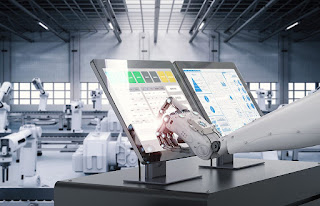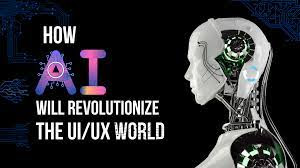Artificial Intelligence - New Buzz in Automation Testing
Revolutionizing Automation Testing with Artificial Intelligence
Did you know that testing is a crucial step to make sure that software is free of defects before it gets to the customers? It's a way to safeguard the application against failures that could happen down the road. Testing is one of the most key areas of computer science as it focuses on the flawless development of critical applications.
Today, more and more companies are turning to artificial intelligence (AI) to improve their testing methods, whether it's automated or manual testing. With the latest digital technology, machines can now write and execute test cases faster than ever before, with minimal human intervention needed to train and improve their performance. It's an exciting development that's helping to make software testing more efficient and effective than ever.
Artificial intelligence (AI) is changing the game when it comes to processing information and reacting to changes in the environment? AI gives machines the ability to learn and analyze data, so they can identify matching patterns and make logical decisions based on that information.
Thanks to AI, we're now seeing humanoid robots that can perform a wide range of tasks, including software testing. And the best part? These robots require very little input from humans, which means testing efficiency can be increased and failure rates decreased.
It's amazing to think about how AI is transforming the way we approach testing and quality assurance. With machines taking on more of the workload, we can focus on other important tasks and let AI handle the heavy lifting. It's an exciting time for technology!
Resource Optimization with AI in Testing
Software testing can take long and is prone to errors. But why is this? Writing and executing test cases can be incredibly time-consuming, and many of the tests are repetitive and need to be run repeatedly. But what if there was a better way to perform testing?
Enter artificial intelligence (AI) robots. With AI, we can drastically reduce the time and effort required for software testing. These robots can quickly identify new paths in the application, making testing more efficient and effective. And the best part? They're easy to maintain.
But that's not all. The algorithms used in AI can also help us build smarter, more productive software for customers. By identifying defects early on, software developers can create the best possible product.
So if you're tired of spending countless hours on software testing, it might be time to consider incorporating AI into your workflow. It's an exciting development that's changing the way we approach software testing and development.
The Current State of AI Testing
When it comes to automated regression tests, human decision-making is often required to identify bugs or new features. Automation testers then write code to execute these scenarios and verify that the actual results align with the expected test results.
However, the integration of artificial intelligence (AI) with automated testing tools can enhance the decision-making process making these regression testing tools extremely handy. This intellectual decision-making system is based on intelligent algorithms that are built on vast data and examples. These algorithms analyze test data and provide information on application stability, failure patterns, defect areas, and more. This information can then be used to estimate, automate, and improve decision-making ability, leading to the development of high-quality software products early in the development life cycle.
When a developer commits a code for any refactoring or defect fix, the AI system comes into play. It correlates this information with test suites and automatically generates test cases. It calculates the changes made in files and triggers the scheduler to run the necessary test cases. This integration of AI and automated testing tools streamlines the testing process and improves the efficiency and accuracy of software development.
The Different Tools and Use Cases in AI Testing
Artificial intelligence (AI) has the remarkable ability to generate thousands of test cases or test scripts in mere seconds, compared to the five weeks it may take for humans to complete the same task. This increased speed and efficiency can result in test coverage up to 100%.
To generate tests automatically, AI requires specific inputs, such as:
· Data on how users interact with the application
· Test results relating to each use case
· Requests for both production and testing environments
· Valid test data for forms and requests
· Version control of builds through SVN or CVS
AI algorithms use historical data to process and analyze this information, making it an indispensable tool for test automation. Several AI-powered testing tools are available on the market, including EndTest, Appvance, Retest, Functionize, and Testim. These tools make it possible to streamline the testing process, enhance the accuracy of results, and ultimately improve the quality of software products.
Automation testers are able to leverage the power of AI in a variety of areas, including creating test data, analyzing defects, and testing applications. A significant portion of the testing process is repetitive, such as performing regression testing, which AI can easily handle.
AI in testing is a game-changer that will continue to grow in popularity. However, it's important to note that AI cannot replace human testers. While AI can assist in certain areas, such as streamlining repetitive tasks, human testers are still needed to apply their logic, creativity, business knowledge, and decision-making skills.
By working in tandem with AI, testers can quickly transform the way testing is conducted today. This collaboration can lead to improved efficiency, accuracy, and the development of high-quality software products that meet the needs of customers.
Down the Line
While it's still being debated whether or not to fully implement AI in testing, it's clear that humans bring a level of creativity and domain knowledge that can't be replaced. Rather than completely relying on AI, a more effective approach is to train testers in how to work alongside AI, including monitoring robots and interpreting test results, while also dedicating more time to exploratory testing.
By embracing this collaborative approach with AI, testers can explore new and exciting aspects of testing that have yet to be fully explored. With this approach, we can harness the best of both worlds and deliver high-quality software products that meet the needs of customers while also keeping pace with technological advancements.




Comments
Post a Comment